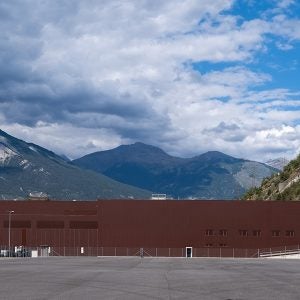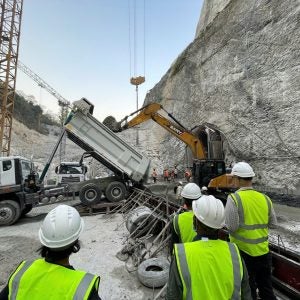THE FAILURE OF THE ZEYZOUN dam in early June, near the town of Hamah – about 350 kilometres north of Damascus, was reported to have caused widespread damage and heavy casualties. Although five villages immediately downstream were affected by the flooding, death toll due to the failure was pegged at 22. The relatively low number was attributed to the evacuation of the villages prior to the failure.
Cracks were noticed prior to the incident, and water began to flow through the cracks as they widened, with a 6m wide split opening up by in about three and a half hours.
In the village of Ziara, about 2km downstream of the dam, the level of water in the village dropped from about 4m to about 10 cm, several hours after the failure.
Zeyzoun, a 43m high 5km long earthen dam on the Orontes river, was built in 1996 for irrigation of the surrounding countryside.
The reservoir impounded by the dam had a capacity of 71M m3, at its full supply level (FSL). It appears that the water level in the reservoir had reached FSL prior to the failure, and that a slide caused cracks to appear on the downstream face.
Officials say cracks appeared in the dam several days before its collapse, giving most residents time to move to higher ground.
The government has ordered an investigation into the dam burst.
Two more dams in the Hama province in northern Syria have been found ‘defective and leaking’ and a consultant has been retained by Syria to inspect them.






